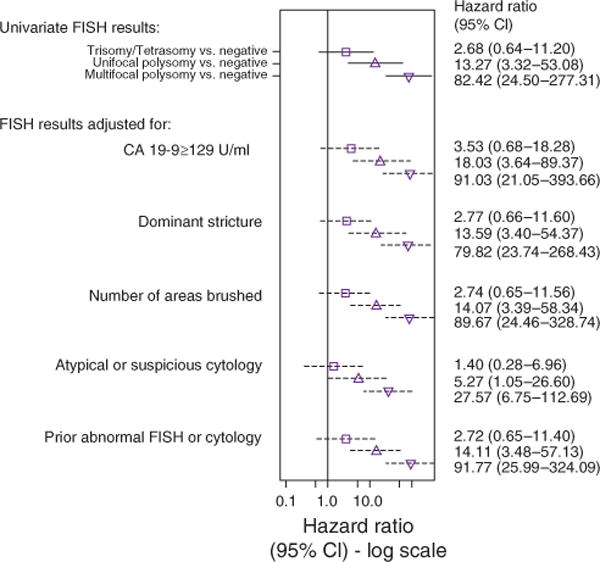Figure 4.

Forest plot illustrating the association of multifocal polysomy, unifocal polysomy, and trisomy/tetrasomy (compared with those with a negative FISH value) with the probability of being diagnosed with cholangio carcinoma after adjusting for other potential risk factors. The figure shows the point estimate (hazard ratio) and 95% confidence interval (CI) of a trisomy/tetrasomy, unifocal, and multifocal polysomy (unadjusted and adjusted for each individual covariate). The cytology adjustment includes two variables representing suspicious cytology vs. negative and atypical cytology vs. negative. A prior history of an abnormal FISH result or cytology included trisomy/tetrasomy or unifocal polysomy (among multifocal polysomy patients) and suspicious or atypical cytology results. Serial polysomy and the proportion of cells with polysomy are excluded from the adjustments since patients with a negative FISH and trisomy/tetrasomy are unable to have polysomy-specific covariates. CA 19-9, carbohydrate antigen 19-9; FISH, fluorescence in situ hybridization.
